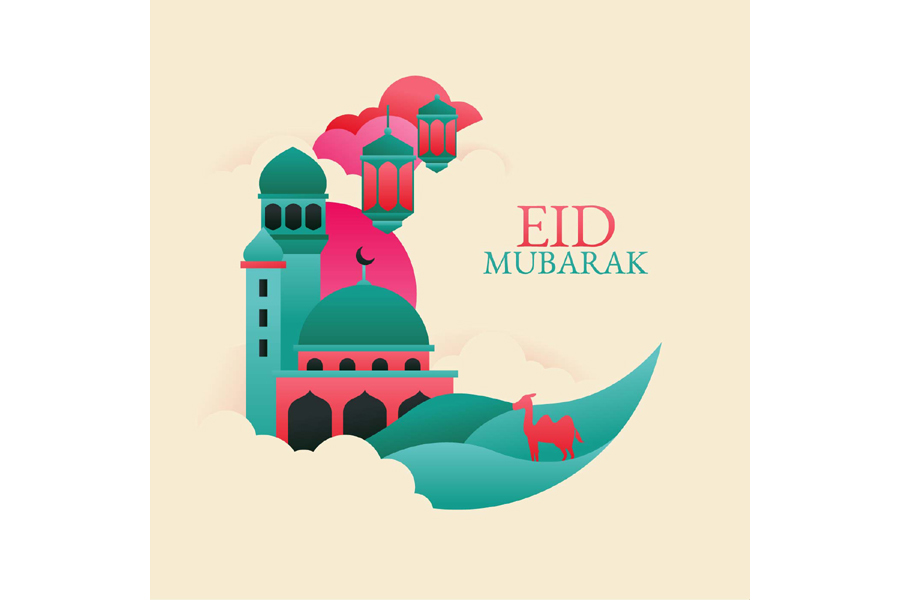
Published :
Updated :

The Muslims worldwide will celebrate Eid-ul-Fitr within two or three days, subject to the appearance of the new moon. In Bangladesh, like all the countries with the Muslim majority, it is the largest annual festival. Along with new attires and delicious meals, as well as charities and gifts, various efforts are there to make the festival pleasant and inclusive. The publication of Eid magazines or special issues on Eid, popularly known as Eid Sankha in Bangla, by different print media houses is one of the essential parts of the celebration. Packed with stories, novellas, poems, features, interviews, recipes, and some other reading materials, Eid Sankha provides a unique boost to literary exercise in the country. It is also an opportunity for newspapers and magazines to generate extra revenue during the festival.
Though the publication has limited attraction thanks to low interest in reading, it symbolises the enriched tradition of the enlightened section of the Muslims in Bengal. Records show that publishing the Eid issue started around a century ago. It was in 1936 that monthly Al Islah from Sylhet published its first Eid issue, which Muhammad Nurul Haque edited. It is not possible to assert that the publication is the first Eid issue or Eid magazine in Bangla. Nevertheless, there is no doubt that it is one of the pioneers of the rich tradition. Two years later, in 1938, Mohammadi published its Eid issue from Kolkata, which was enriched by the writings of contemporary eminent Muslim writers. Mohammadi was initially a monthly journal first published in 1903 and Mohammad Akram Khan was the founding editor and publisher. Though planned to be published monthly, it was quite infrequent for over two decades and was finally republished weekly from 1927 to 1947. Later it started to reappear from Dhaka in 1948 and continued until 1970. The first issue of Millat was published in 1946 which was edited by Abul Hashim. It was a voluminous publication of 22 essays, 15 poems, and nine stories contributed by established and promising Muslim writers. All of these newspapers and periodicals have been defunct for many decades.
Begum, the first weekly magazine entirely dedicated to Muslim women in Bengal, published its first Eid issue in 1948 from Kolkata. Within two years, it was shifted to Dhaka. Begum is still in publication, although it is now a monthly magazine. Today, Begum is the longest-surviving periodical, founded by Mohammad Nasiruddin, also the founding editor of Saogat. Poet Sufia Kamal was the first editor of Begum who left the charge to Nurjahan Begum, daughter of Nasiruddin, within a few months. Nurjahan continued to edit the weekly until she died in 2016. The Eid issue of Begum was quite popular among women from the '50s to the '80s, and it even attracted many male readers.
After the independence of Bangladesh in 1971, weekly Bichitra became a new trendsetter of the Eid issue. Fazal Shahabuddin was the founding editor, while Shahadat Chowdhury, a veteran freedom fighter, took charge later and turned it into the most popular weekly magazine in the country until its shutdown in 1997. There was a time when the Eid issue of Bichitra was a must-read magazine. From Showkat Ali to Hasnat Abdul Hye, a good number of eminent writers took the opportunity to unveil their significant literary works in the Eid issue of Bichitra. Some other weekly magazines also joined the bandwagon during '80s and '90s.
Daily newspapers also started to publish Eid issues, finding it prestigious and profitable, since the beginning of the current century. For the last two decades, there has been a boom in publishing Eid issues by dailies, weeklies, fortnightlies and monthlies. Even many little magazines also go for Eid issues. There are also online Eid issues.
The Eid issue provides a diverse collection of literary works that serve as a mirror to contemporary society. The intrinsic value of the publication is profound, provided it is well thought out. In the age of smartphone aggression, when almost everyone is preoccupied with digital entertainment, the Eid issue still holds its appeal. It offers a unique opportunity to delve into the literary world and understand the societal trends and issues of the time.
asjadulk@gmail.com


 For all latest news, follow The Financial Express Google News channel.
For all latest news, follow The Financial Express Google News channel.